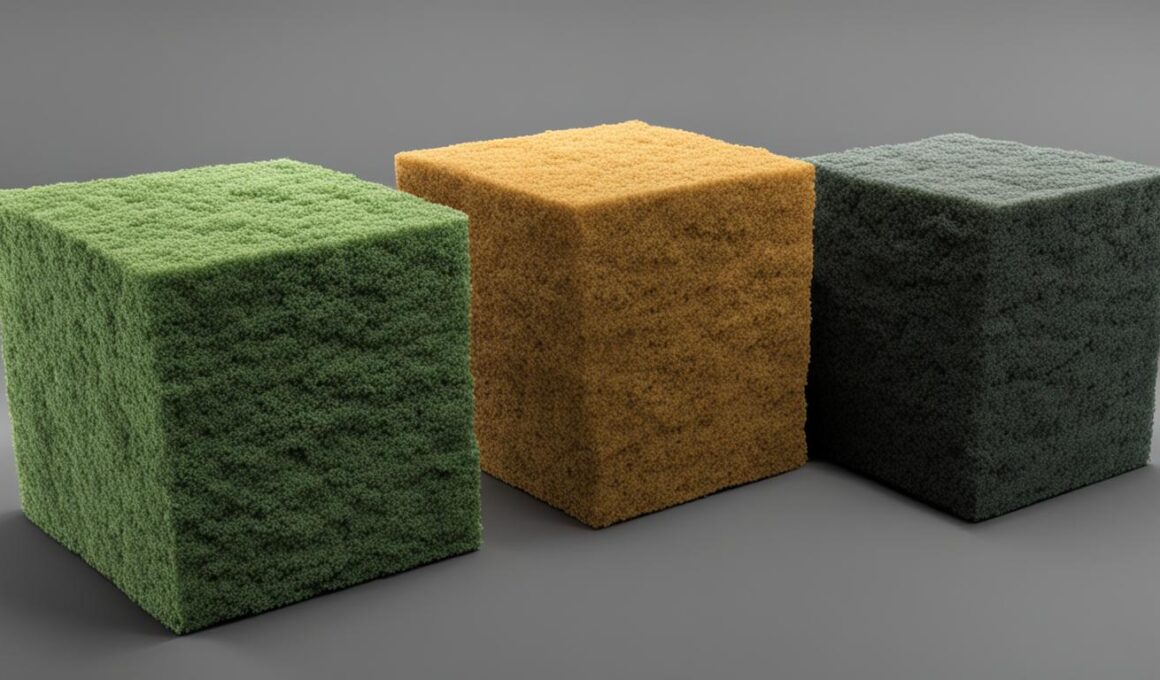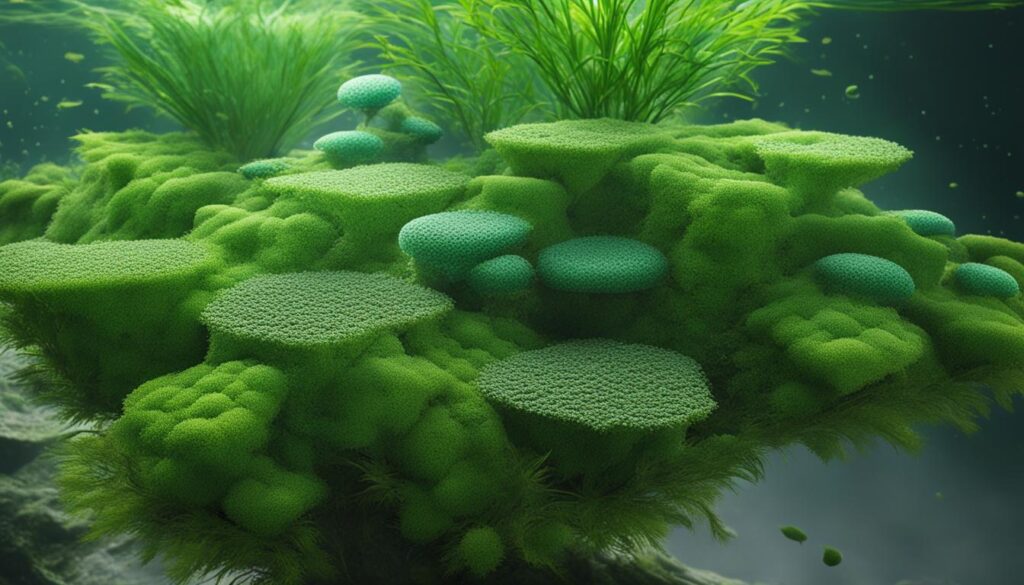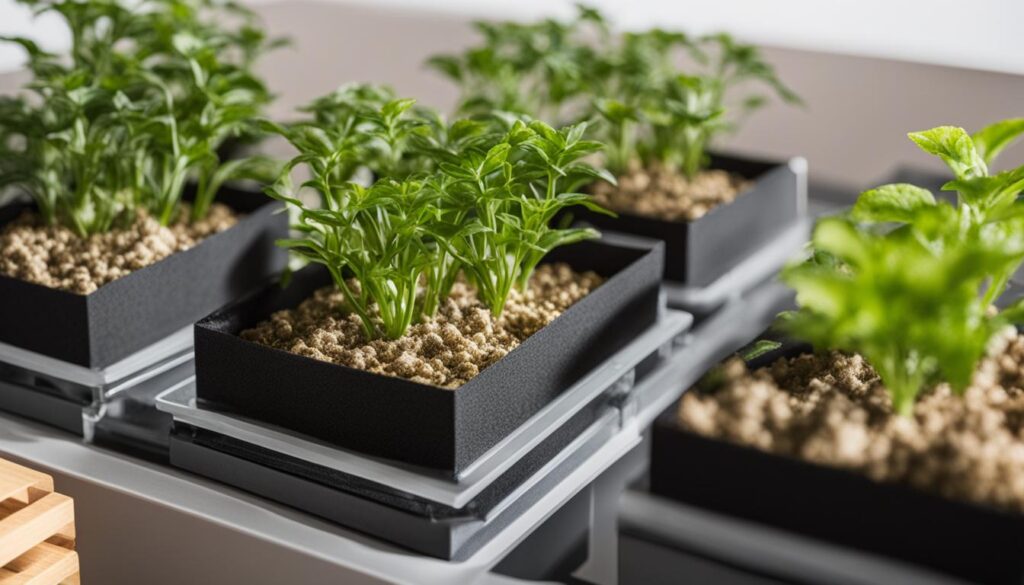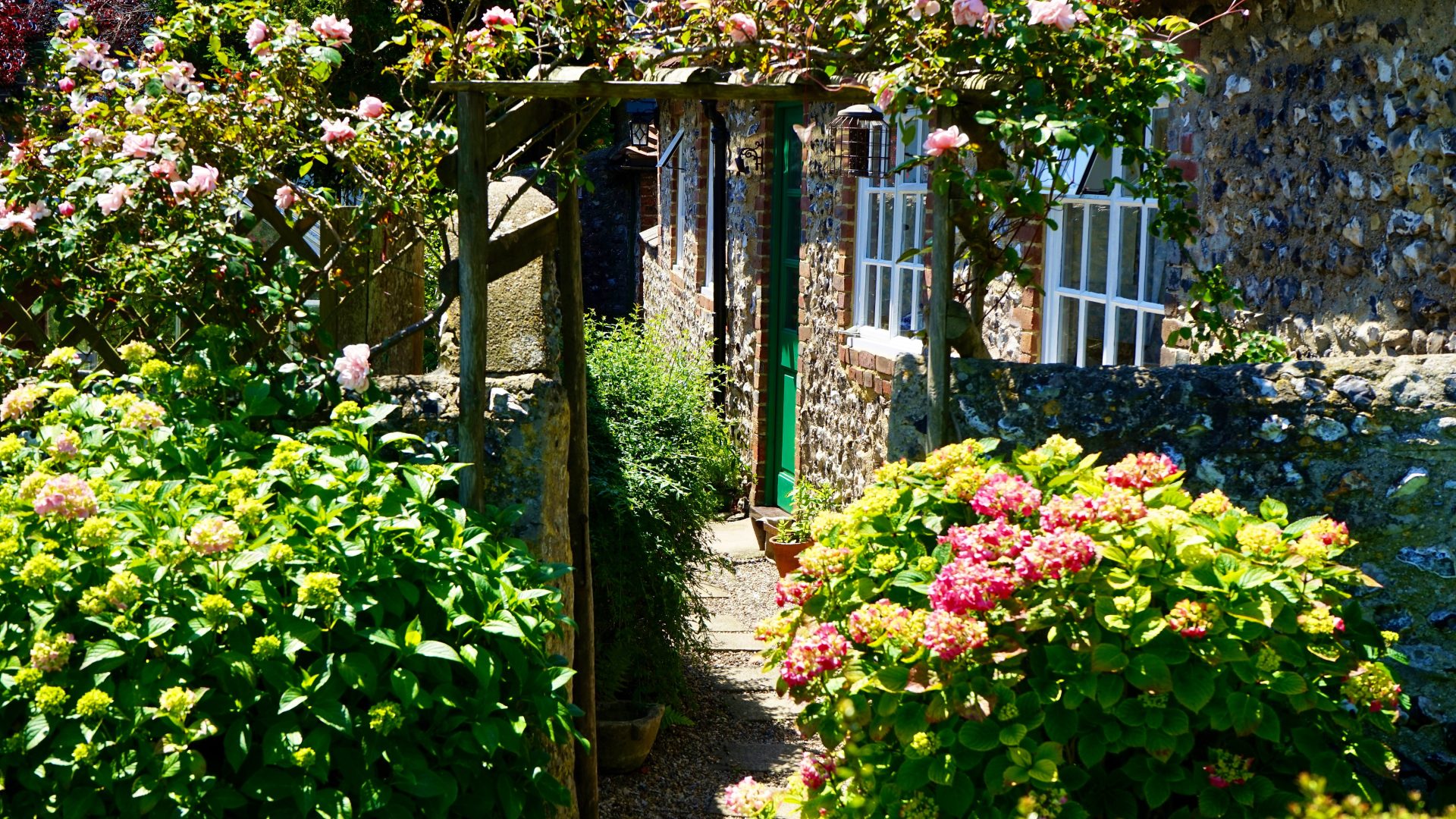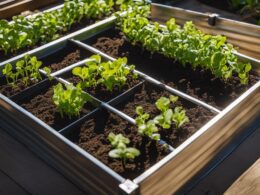As a hydroponic gardener, you are constantly exploring various methods and tools to increase the success of your soil-free cultivation. Two widely used hydroponic mediums among gardeners are Oasis Cubes and Rockwool, each offering unique properties for different stages of plant growth. In this comprehensive comparison guide, we will delve into the nuances of Oasis Cubes and Rockwool, discussing important factors like moisture control, environmental impact, user experience, and cost-effectiveness. By the end of this guide, you’ll have the knowledge to make an informed decision regarding the most suitable hydroponic growing medium for your gardening needs.
Key Takeaways
- Oasis Cubes are lightweight and easily movable, ideal for plant germination and relocation.
- Rockwool is a traditional favorite in the hydroponic community, known for its excellent water retention and aeration capabilities.
- Both Oasis Cubes and Rockwool require careful moisture management to avoid root rot and drying out.
- Sustainability is a growing concern when choosing hydroponic mediums, with Oasis Cubes offering easier disposability while Rockwool faces critiques for its environmental impact.
- Setup and maintenance vary between Oasis Cubes and Rockwool, affecting user experience and overall convenience.
- Cost-effectiveness in hydroponic mediums is crucial, with Oasis Cubes generally offering a more affordable option for germination compared to Rockwool.
Introduction to Hydroponic Growing Mediums
As hydroponic gardening gains traction in the soil-free cultivation realm, the importance of hydroponic growing mediums cannot be overstated. These mediums play a crucial role in supporting plant roots, maintaining optimal water and oxygen ratios, and allowing nutrient exposure. Popular hydroponic media include vermiculite, coconut coir, perlite, and oasis cubes, each with its unique properties and applications. In this section, we will explore the significance of these mediums, focusing on their ability to hold moisture and provide plant support.
- Vermiculite – This mineral medium has excellent moisture retention abilities, which makes it suitable for plants that thrive in damp conditions. Vermiculite ensures that plants receive the necessary amount of water and nutrients throughout their growth cycle.
- Coconut Coir – Made from the fibrous husk of coconuts, this medium offers excellent air-to-water ratio and promotes root development. These factors make coconut coir ideal for various hydroponic gardening systems, including drip irrigation and nutrient film techniques.
- Perlite – This lightweight volcanic rock medium provides excellent drainage and aeration, making it suitable for hydroponic setups that require well-drained conditions. Perlite is an inert medium, which means it does not alter the pH or nutrient levels of the hydroponic solution.
- Oasis Cubes – Lightweight and versatile, Oasis Cubes are a popular choice for hydroponic gardeners. These cubes, made from phenol-formaldehyde foam, are easy to manage and provide plants with stable support and sufficient oxygen supply.
To choose the most suitable hydroponic growing medium for your garden, assess the specific requirements of your plants. Factors like the water-to-oxygen ratio, moisture retention, and root support must be considered in your decision.
| Medium | Moisture Retention | Aeration | Root Support |
|---|---|---|---|
| Vermiculite | High | Medium | Medium |
| Coconut Coir | Medium | High | High |
| Perlite | Low | High | Medium |
| Oasis Cubes | Medium | Medium | High |
Understanding the characteristics of each hydroponic growing medium can help you optimize your soil-free cultivation system, ensuring that your plants receive the right balance of water, oxygen, and nutrients for vigorous growth. As you expand your hydroponic gardening skills, you will discover that choosing the appropriate medium is an essential part of your success.
The Origin and Nature of Oasis Cubes
Oasis Cubes have become popular as a hydroponic growing medium due to their distinct composition and characteristics that cater to a wide array of plants. Understanding the composition of these cubes and their role in hydroponic gardens will shed light on their increasing demand and usage among home and professional growers alike.
Understanding the Composition of Oasis Cubes
Oasis Cubes are made from phenolic foam, which is a type of inert material that remains chemically and biologically inactive, posing no risk to plants. This foam often consists of perlite or vermiculite, which are responsible for providing optimal air and water balance for plant roots.
The Oasis Cubes’ structure boasts open cells that facilitate proper air circulation and water distribution. These small, individual cubes possess a unique ability to maintain an ideal moisture level, ensuring that your plants receive an adequate supply of nutrients while avoiding excess dampness, which could lead to root rot and other diseases.
Benefits of Oasis Cubes in a Hydroponic Garden
- Efficient nutrient absorption and water retention due to the open cellular structure.
- Inert and chemically inactive, making it a safe choice for plant growth.
- Easy to manage because of their lightweight and modifiable nature.
While Oasis Cubes offer various advantages, they also have certain limitations, such as the absence of a built-in draining system. This feature necessitates attentive water management, ensuring that your plants receive the proper amount of water without suffocating the roots. Consequently, regular watering is crucial to prevent the cubes from drying out, thereby maintaining a thriving hydroponic garden.
| Characteristic | Description |
|---|---|
| Material | Phenolic Foam |
| Water Retention | High, but requires regular watering |
| Aeration | Good air circulation due to open cell structure |
| Chemical Activity | Inert and safe for plant growth |
| Maintenance | Low, but careful water management necessary |
In conclusion, Oasis Cubes are a versatile and efficient growing medium that offers various benefits for hydroponic gardeners. Their inert and chemically inactive nature, coupled with excellent water retention and proper aeration, makes them an ideal choice for various plants. However, proper care and attention to water management are crucial in maintaining their effectiveness in supporting plant growth.
Exploring Rockwool: The Traditional Favorite
Rockwool, a classic in the hydroponic growing community, is a reliable and popular medium that offers a range of benefits for gardeners. Produced by spinning molten rock and other materials into fibers, which are then pressed into cubes for plant cultivation, Rockwool is favored for its advantageous water retention capabilities and support during seed germination and seedling growth stages.
While this hydroponic medium is widely used, it does pose challenges that warrant consideration, such as pH adjustments and environmental concerns due to its non-biodegradable nature. In the sections below, we delve further into the properties and qualities of Rockwool, exploring its strengths and drawbacks within the realm of hydroponic gardening.
Water Retention and Aeration in Rockwool
One of the most significant benefits of using Rockwool as a hydroponic medium is its excellent water retention capabilities. It can absorb and maintain water, ensuring that the plant’s roots have ample access to moisture for sustained growth. In addition to water retention, Rockwool is renowned for providing aeration; its fibrous texture promotes air exchange, enabling plants to obtain necessary oxygen for respiration and metabolism.
- High water retention: Rockwool’s ability to retain water can help reduce the frequency of watering required for hydroponic plants.
- Supports aeration: The fibrous structure of Rockwool allows for excellent gas exchange between the plant roots and the surrounding environment.
pH Management and Environmental Considerations
Despite its many advantages, Rockwool presents specific challenges that growers should be aware of. One notable drawback is the need for pH adjustment, as Rockwool fibers tend to have a high pH level when initially manufactured. This can negatively impact plant health, so gardeners must soak the cubes in a pH-adjusted solution before use to maintain proper pH balance.
In terms of environmental concerns, Rockwool’s non-biodegradable nature contributes to waste generation. Since it does not decompose, disposing of used Rockwool cubes can be problematic and contribute to landfills. As a result, gardeners should explore alternative hydroponic mediums that align with environmental sustainability goals if this is a priority for them.
In conclusion,
Rockwool has long been a trusted resource within the hydroponic growing community, offering valuable properties such as water retention and aeration. However, challenges like pH management and environmental implications warrant consideration when selecting a hydroponic medium. By weighing its advantages against its drawbacks, gardeners can make informed decisions regarding their hydroponic cultivation practices and preferences.
Oasis Cubes Vs Rockwool: Moisture and Aeration Dynamics
Both Oasis Cubes and Rockwool demonstrate different moisture retention and aeration dynamics. In this section, we will delve into the water retention properties of Oasis Cubes and evaluate the aeration and drainage capabilities offered by Rockwool in hydroponic systems.
Evaluating Water Retention in Oasis Cubes
Oasis Cubes are known for their substantial water retention ability, which proves beneficial for plants requiring a consistent moisture supply. This attribute is especially useful when cultivating plants in environments with fluctuating water needs, such as:
- Cactus and succulents
- Herbs
- Leafy greens
- Flowering plants
However, due to the shallow depth of most Oasis Cube designs, they often require frequent water replenishment to prevent drying out and maintain optimal moisture conditions for plant growth.
Assessing Aeration and Drainage in Rockwool
In comparison, Rockwool presents excellent aeration capabilities while retaining moisture effectively. With its fibrous texture, Rockwool allows for good gas exchange that is essential for healthy plant root development. Key benefits of Rockwool aeration capabilities include:
- Promoting strong root structure
- Facilitating nutrient uptake
- Improving plant overall health and vigor
However, it is crucial to harmonize water levels and aeration in Rockwool to prevent overly wet conditions that could harm plant roots. Overwatering can lead to root rot and other diseases caused by oxygen deprivation at the root zone.
In summary, the water retention properties of Oasis Cubes and the aeration and drainage capabilities of Rockwool in hydroponic systems play a crucial role in determining their suitability for specific plant needs. Understanding these dynamics will help you make an informed decision when choosing the ideal hydroponic medium for your garden.
Environmental Impact: Sustainability of Oasis Cubes and Rockwool
As environmental sustainability becomes an increasingly important consideration for hydroponic gardeners, the choice of a suitable medium should incorporate the ecological footprint of both Oasis Cubes and Rockwool. This section will examine the environmental impact of these popular hydroponic mediums, particularly concerning disposability, decomposition, and manufacturing processes.
Oasis Cubes: Biodegradable and Easy Disposal
Oasis Cubes are made from phenolic foam, a material that is biodegradable and relatively harmless to the environment. This makes disposal of used Oasis Cubes less of an environmental concern, as they will eventually break down and decompose. Moreover, their lightweight and compact nature reduces the energy and resources needed for transportation, further supporting their sustainable credentials.
Rockwool: Environmental Challenges
While Rockwool is an effective hydroponic medium, it poses significant environmental challenges. Since it is made of rock fibers, it takes a long time to decompose, which can lead to landfill problems. Additionally, there are concerns regarding the potential release of hazardous substances during the manufacturing process of Rockwool, which can pollute air and water sources. These factors make it a less environmentally friendly option compared to Oasis Cubes.
- Oasis Cubes: Biodegradable and easy to dispose of, reducing environmental impact in the long run.
- Rockwool: Non-biodegradable and potentially harmful to the environment during manufacturing and disposal.
| Hydroponic Medium | Disposability | Decomposition | Manufacturing Process |
|---|---|---|---|
| Oasis Cubes | Easy, biodegradable | Decomposes over time | Environmentally safe |
| Rockwool | More challenging, non-biodegradable | Slow, protracted decomposition | Potential harm to air and water quality |
In conclusion, environmental sustainability is an important aspect to consider when selecting a hydroponic medium. Oasis Cubes offer a greener solution with their biodegradable nature and easy disposal, while Rockwool presents more significant ecological challenges in terms of decomposition and potential harm during manufacturing. Ultimately, gardeners should carefully weigh these factors alongside performance and user experience when making their choice for an environmentally responsible hydroponic gardening experience.
User Experience: Handling and Ease of Use
When choosing a hydroponic medium, user experience is a crucial aspect to consider. Setup convenience and long-term maintenance play significant roles in managing a successful hydroponic garden. In this section, we will compare the convenience of setup and maintenance of Oasis Cubes and Rockwool.
Comparing the Convenience of Setup
Oasis Cubes are known for their impressive ease of use, particularly during the initial setup stage. Their lightweight nature makes handling and transporting these cubes a breeze. Additionally, Oasis Cubes require minimal preparation before use, allowing you to quickly plant your seeds or seedlings.
On the other hand, Rockwool demands a more complex process before plants can be introduced. It’s essential to pre-soak Rockwool to balance the pH levels and ensure a suitable environment for plant growth. Care must also be taken to prevent health hazards from airborne fibers that can occur during handling.
Long-Term Maintenance of Oasis Cubes and Rockwool
In terms of long-term maintenance, each medium has its unique requirements and challenges:
| Oasis Cubes | Rockwool |
|---|---|
| • Typically demand less attention post-setup. | • Require diligent monitoring to manage pH levels. |
| • Rely on regular watering to prevent drying out. | • Lower watering frequency due to excellent moisture retention. |
| • No need to manage airborne fiber risks. | • Require adequate precautions to minimize fiber inhalation risks. |
When deciding between Oasis Cubes and Rockwool, carefully assess their setup convenience and the ongoing maintenance demands for each medium. This will help ensure that your hydroponic garden flourishes while delivering a comfortable and sustainable user experience.
Cost-Effectiveness: Analyzing the Economic Choice
When it comes to selecting a hydroponic growing medium, cost-effectiveness and affordability are important factors for many gardeners. In this section, we will examine the economic differences between Oasis Cubes and Rockwool
Oasis Cubes: Affordability and Ease of Handling
Oasis Cubes are generally a cost-effective option. Their lower price point and ease of handling make them an attractive choice for many hydroponic gardeners, particularly those with budget constraints or limited space. However, Oasis Cubes are primarily used for germination and not as a full growing medium, which may necessitate the purchase of additional materials for the advanced stages of plant growth.
Rockwool Economics: Effective but Potentially Costly
While Rockwool is an effective hydroponic medium with excellent water retention and aeration properties, it can incur higher costs due to its pH management requirements and non-reusability. These factors may raise concerns about long-term affordability for some growers. Additionally, the need for protective measures during handling may increase the overall cost of using Rockwool as a growing medium.
| Oasis Cubes | Rockwool |
|---|---|
| Lower price point | Higher price point |
| Easy handling and transport | Requires protective measures during handling |
| Mainly used for germination | Used as a full growing medium |
| No pH management required | Requires pH management |
| Reusable for multiple growing cycles | Non-reusable |
Ultimately, the choice between Oasis Cubes and Rockwool will depend on your specific gardening needs, priorities, and budget. Both mediums have their advantages and drawbacks, so it’s essential to determine which best aligns with your objectives and growing conditions. Keep in mind that cost-effectiveness and hydroponic medium affordability are just two of the factors to consider when selecting a growing medium for your hydroponic garden.
What Are the Key Differences Between Oasis Cubes and Rockwool for Plant Growth?
When it comes to uncovering oasis cubes review, it’s vital to understand the key differences between oasis cubes and rockwool for plant growth. Oasis cubes are made from foam while rockwool is a mineral-based material. Rockwool provides better aeration and drainage, while oasis cubes are better for water retention. Both have their advantages for different types of plants.
Conclusion
In this comprehensive comparison guide, we have closely examined Oasis Cubes and Rockwool as hydroponic mediums, assessing factors such as moisture control, aeration, cost, environmental impact, and user experience. Through this analysis, we’ve observed the advantages and disadvantages of each growing medium, enabling growers to make a well-informed decision tailored to their individual requirements and preferences.
Oasis Cubes boast lightweight handling, ease of transport, and quick germination, providing an affordable choice for those prioritizing convenience and cost-effectiveness. On the other hand, Rockwool has a strong reputation in the hydroponic community for its excellent water retention and aeration capabilities. Nonetheless, it demands more attention regarding pH management and can induce higher costs due to its non-reusability and potential health hazards from fibers.
Both Oasis Cubes and Rockwool demonstrate unique features that cater to various hydroponic gardening styles and needs. Ultimately, your final decision should factor in your plants’ specific requirements, your sustainability priorities, and the overall goals for your hydroponic growing endeavors. By closely evaluating each medium’s attributes and limitations, you will be better equipped to choose the most suitable option for your particular gardening projects.





